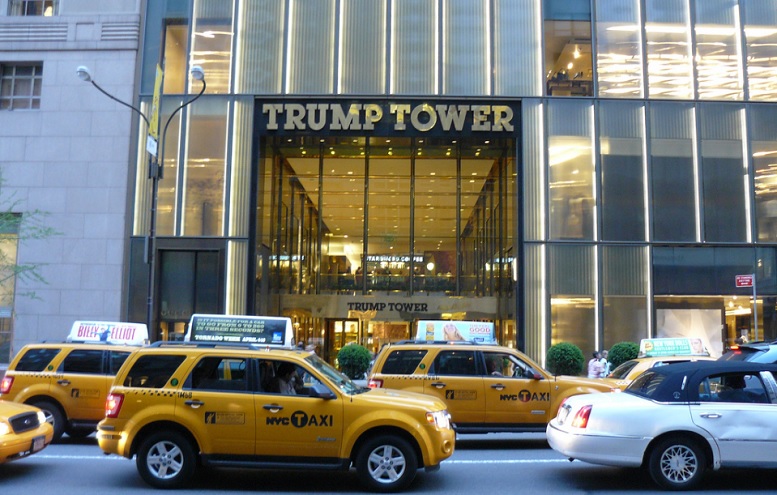There’s plenty of reason to be pessimistic about Republicans controlling both chambers of the legislature and the executive branch. The transportation plank of the GOP’s 2016 platform is exclusively highway-focused, and says transit, bike-share, and sidewalks have no business receiving federal transportation dollars.
But is it possible that Donald Trump’s New York roots and experience in real estate development could turn out to be a good thing for our region’s transportation network?
We’ve seen some innovative ideas come out of the city’s real estate firms in recent years: there’s the deal between the City and developer SL Green which will inject private money into subway station improvements beneath Grand Central Terminal; the move by Vornado Realty Trust to pedestrianize 33rd Street between Seventh and Eighth Avenues; and of course, the purchase of Alta Bicycle Share by Related Companies affiliate REQX Ventures, which led to upgrades and expansions for Citi Bike.
The Trump Organization hasn’t really been involved in transportation, but Trump himself is a known lover of trains. He has also noted in speeches and in his 2015 book Crippled America how transit systems in the United States lag behind those he’s seen in other countries.
But how do these observations translate into policy moving forward? His campaign recently put out an infrastructure plan which is heavy on privatization and puts emphasis on the types of projects that generate revenue. This represents a departure from typical government-financed projects or even increasingly common public-private partnerships, but there seems to be an appetite for both road pricing and new funding models in the region. The president-elect says he’s going to “build the greatest infrastructure on the planet earth” but there’s still a lot of details to be worked out, not to mention the fact that his plan to fund these sorts of things is yet to be proven.
It’s also entirely possible that transportation spending is directed to the rural and suburban districts that got him elected and “inner cities” end up being left out. Is there any reason to believe New York City, Trump’s hometown, will have better luck?
If Trump is at all serious about improving transit and intercity rail, he’s not likely to find many supporters within his own party. There’s been speculation on who might be included in his cabinet; appointing a transportation secretary who can connect with Democrats as well as Republicans would be a smart move. The president-elect needs to understand that our transportation system, especially in cities, must be focused on moving people and supporting a growing economy — not simply used as a tool for creating construction jobs. And in order to do that, he needs to build not just literal bridges, but figurative ones too.


[…] and funding for Gateway Tunnel were more concrete — With federal funds for transit looking uncertain for the next four years, and no tangible headway made on the environmental or planning process yet, what will happen next […]
[…] However, the transportation plank of the Republican Party’s 2016 platform is focused exclusively on highways, so the appropriation of federal funds for bicycle and pedestrian safety could come under attack […]
[…] heard the president say he wants to spend $1 trillion on infrastructure, and we’ve surmised that perhaps his experience as a New York City-based developer might lead him to favor investments […]